The SR-LAB startle response system is the world's most popular startle reflex research tool for assessing fear-potentiated startle (FPS), pre-pulse inhibition (PPI), and startle habituation.
SR-LAB offers a comprehensive hardware and software solution for many startling applications. The system can be set up with up to 16 stations for high throughput.
SR-LAB software can control almost any combination of lights, air puffs, background noise, foot shock settings, noise bursts, and tones. Crucially, it can accommodate many test paradigms without the need for expensive add-on kits or extra software.
Features
- Supports all startle paradigms, such as gap detection, fear-potentiated startle, pre-pulse, cross-modal inhibition, and startle habituation
- Set up as many as 16 test stations to test big subject groups quickly
- All test paradigms are controlled by user-friendly software
- Plug-in kits for shock, pure tone, air puff, and light stimulation
- Millivolts were reported as the results
- Five distinct cage choices for test animals of different sizes
Description
Easily test the most prevalent test paradigms
No extra kits are needed to test the Startle Habituation and Pre-Pulse Inhibition paradigms using the basic SR-LAB System. Simply add the SR-LAB Potentiated Startle Kit, which comes with a shock grid, a cue light, and the SDI Shocker. This proprietary design prevents the animal from identifying any patterns to test the Fear Potentiated Startle paradigm. The Fear Potentiated Startle paradigm can be supported without further software.
One software program for all paradigms
With the SR-LAB program, people can create and implement any startle reflex testing paradigm. Other systems use different software for each paradigm, which has two disadvantages: First, people have to pay extra, and second, they can only use the manufacturer's paradigms and have no freedom to create their own.
SR-LAB's notion of a session involving trials (discrete tests) ensures that every trial is carried out without missed trials. The animals will go through every trial in a session, and all trial data will be saved for analysis at a later time.
Other highlights of SR-LAB™’s software include
Construct trial definitions with no programming required
Choose from various commands in a preset menu to customize the trials to unique requirements. To make sure the Trial definition is appropriate for purposes, add, insert, or remove commands.
Point and click to set session-level parameters
SR-LAB's straightforward point-and-click interface allows users to create trial lists, set up Inter-Trial Intervals, and configure session-level parameters.
Some examples of session parameters are the number of samples, sampling rate, background noise level, and repetitions. With a mouse click, you can also add or remove Trials to define and modify sessions. People may easily change or rename sessions at any moment.
The animal would not be able to detect a pattern that would distort results because the durations of the Inter Trial Intervals can be automatically randomized.
At-a-glance test monitoring
View response waveforms to monitor the test procedure. In contrast to previous techniques, the waveform visual instantly confirms the generated figures' accuracy.
Verify data with ease using the SR-LAB Analysis Software
Use the SR-LAB Analysis Software to confirm all of the startle response data. To confirm numerical data, people can check the entire waveform for each response. Start Analysis, Analysis Range, Baseline, and Response Window are among the scoring parameters that can be configured. By enabling the view, export, and utilization of raw data values, the SR-LAB Analysis Software further guarantees the accuracy of computed values.
Eliminate concerns about inaccurate readings
An important component of the precision that SR-LAB offers is its accelerometer. From the tiniest mouse to the biggest rat, the sensor's rapid response to abrupt force changes guarantees an accurate reading. A complementary enclosure design that securely ties the enclosure with the sensor helps enhance the sensor's accuracy. Other systems use load cells with restricted ranges and react less well to abrupt force changes. As animal weights fluctuate, they must replace the load cells.
Avoid stress-induced results
The tubular enclosures in the SR-LAB are made to let the animals move about freely without being restrained, preventing the stress of restriction that can change the results. The tubular shape simultaneously keeps animals over the sensor for accurate findings. An ultra-stable, hermetically sealed motion sensor that records various startle responses will be used to monitor subjects. Enclosures come in five different sizes and are clear acrylic for effortless cleaning.
System components include
- Composite test cabinet (ABS)
- Slotted animal cages for tethered animals come in four sizes, while standard animal enclosures come in five sizes.
- Power supply
- Input and output cables
- Software and user manual
- Software utilities for data analysis
Specifications
Dimensions
- The dimensions of the ABS isolation cabinet are 15" (W) × 14" (D) × 18".
- 10.25" (W) × 10.25" (D) × 4 3/8" (H) control box
- Small Animal Enclosure – 3 1⁄2” (L) × 1.1” (ID) Up to ~25 g
- Small/Medium Animal Enclosure – 5” (L) × 1 1⁄2” (ID) Up to ~50 g
- Medium Animal Enclosure – 6” (L) × 2 1⁄4” (ID) Up to ~150 g
- Large Animal Enclosure – 8” (L) × 3 1⁄2” (ID) Up to ~450 g
- X-Large Animal Enclosure- 10″ (L) × 5″ (ID) Up to ~800 g
- Small/Medium Slotted Animal Enclosure – 5” (L) × 1 1⁄2” (ID)
- Medium Slotted Animal Enclosure – 6” (L) × 2 1⁄4” (ID)
- Large Slotted Animal Enclosure- 8” (L) × 3 1⁄2” (ID)
- X-Large Slotted Animal Enclosure- 10″ (L) × 5″ (ID)
Weight
3 lb (Control Box), 24 lb (Isolation Cabinet)
Maximum # stations
ABS plastic for the isolation cabinet, plastic for the control box, and acrylic for the animal enclosure
Material composition
16 stations per computer
Standard cable lengths
12 ft
Certifications
CE
Stimuli options
PPI LED Light, High-Intensity Light, air puffs, foot shocks, and user-specified stimuli
Color options
White
Accessories
Use the startle paradigm without constraint
Add-on kits, which do not require more software or limitations, are available if SR-LAB's basic kit does not cover the required paradigms. Among the available add-on kits are:
Potentiated startle kit
This kit, which is designed to test for Fear Potentiated Startles, comes with a cue light, shock grid, and a shocker with eight scrambled outputs. The animal cannot distinguish a shock pattern due to the jumbled outputs, guaranteeing superior outcomes.
Pure tone kit
The pure tone kit provides access to a wide spectrum of frequencies through an external function generator and audio amplifier. The SR-LAB software allows the frequency and duration of sounds to be adjusted. This method eliminates any sound clicks found in other systems.
Up to 50 KHz can be handled by the external isodynamic tweeter speaker installed on top of the SR-LAB cabinet. An analog voltage level is applied to the function generator, which then outputs the corresponding sine wave frequency to the audio amplifier for output to create the tone. This kit is helpful for gap detection and startle reflex testing.
Tactile kit
The air puff stimulus provided by the Tactile Kit is typically utilized as a kinder, gentler substitute for shock.
High-intensity light kit
The package provides the test station with an overwhelming amount of intense light, which makes the animal anxious. The LED lights give off no heat, which can affect the animal. This kit is used for anxiety-potentiated startle testing.
Standardization unit sets a standard baseline response
The Standardization Unit, which fastens to the top of the animal cage and applies a repetitive, fixed force to the sensor, will be used to set the baseline response of each test station to the same level before testing.
Turn the reaction Adjust dial on the test station's side to set the reaction level to the recommended values listed in the user's manual. Simply move the Standardization Unit to the next station and repeat after setting up the first test station. This guarantees that the study is trustworthy and that data from several test stations may be compared.
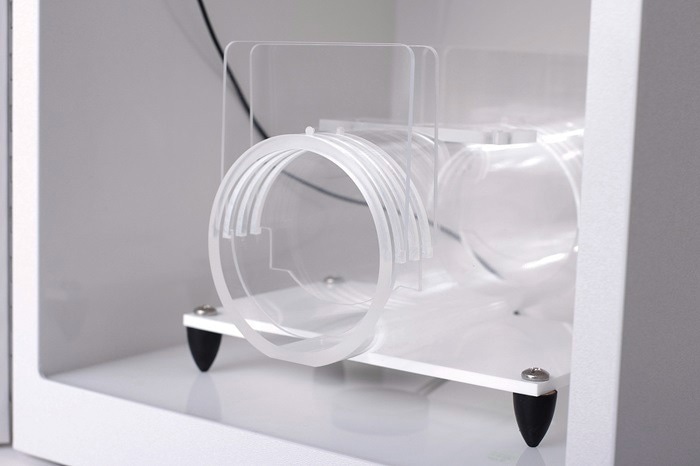
Image Credit: San Diego Instruments, Inc.
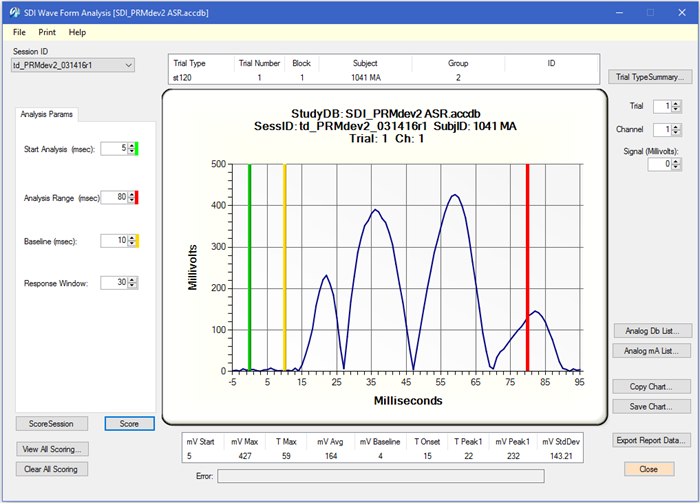
Image Credit: San Diego Instruments, Inc.
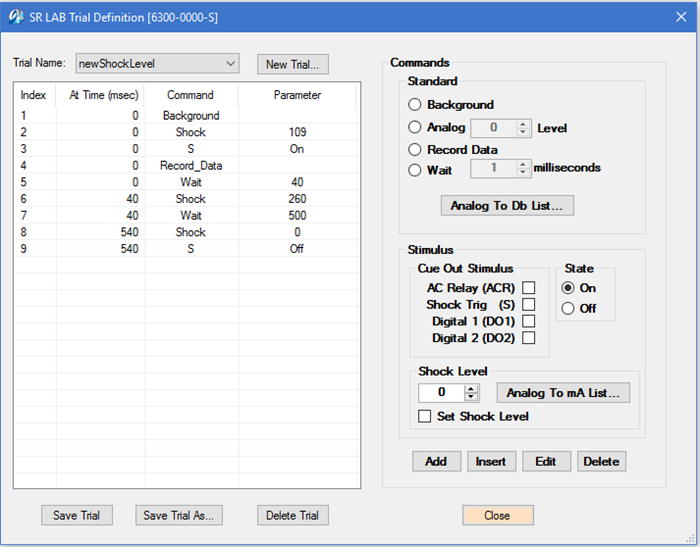
Image Credit: San Diego Instruments, Inc.
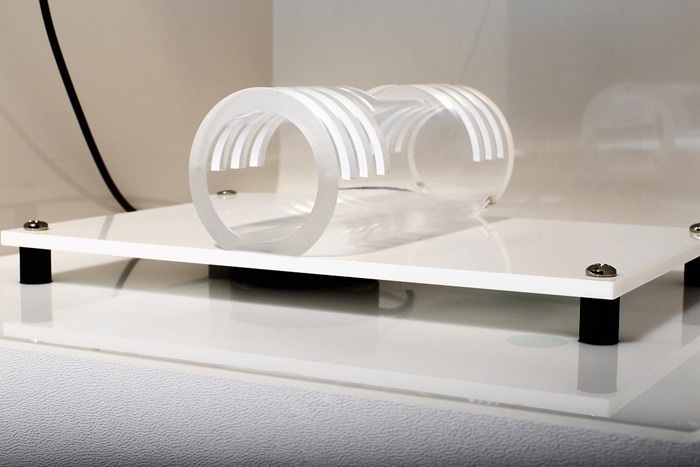
Image Credit: San Diego Instruments, Inc.
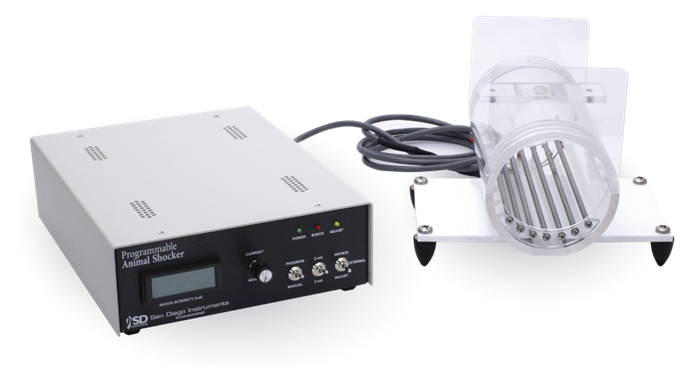
Image Credit: San Diego Instruments, Inc.